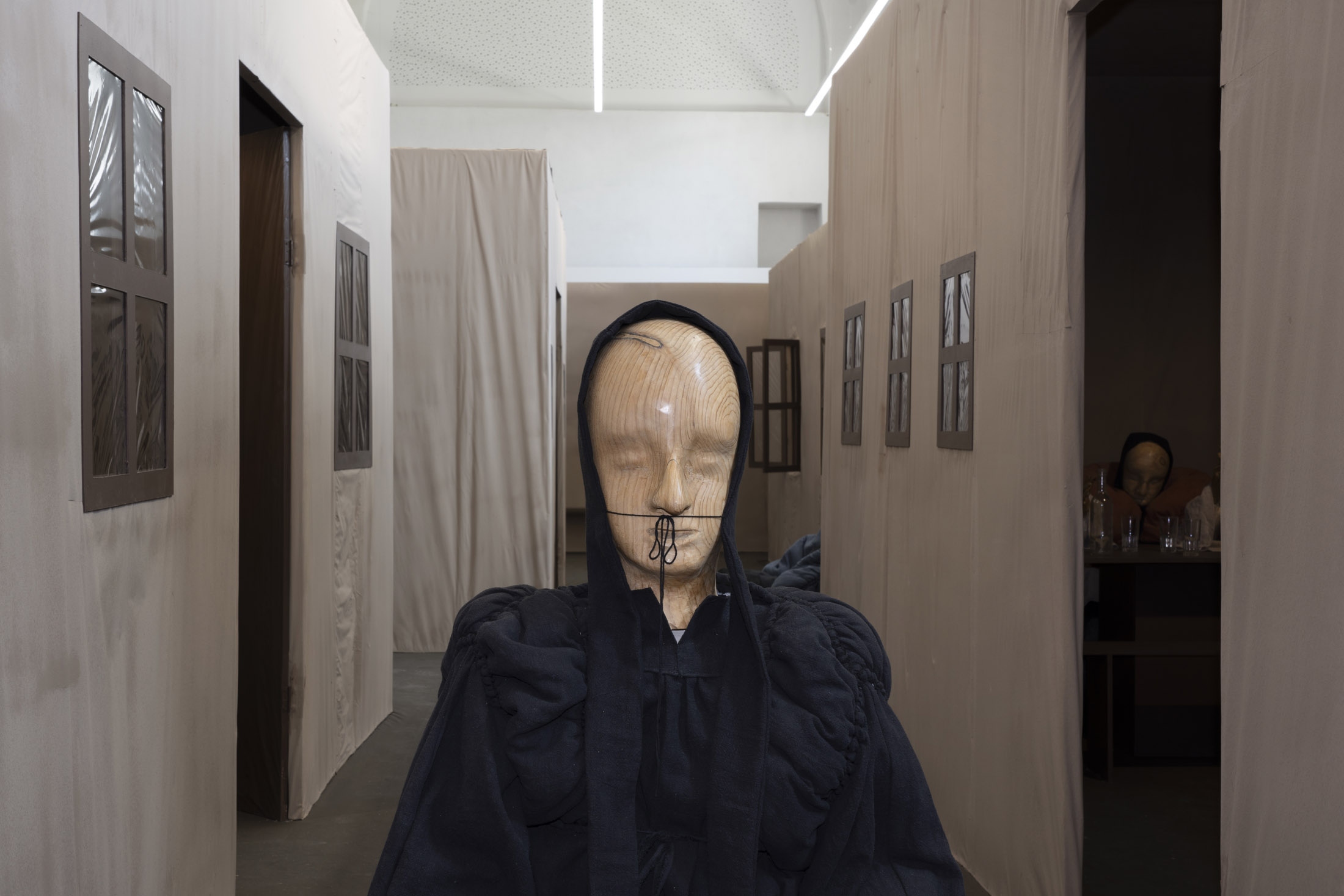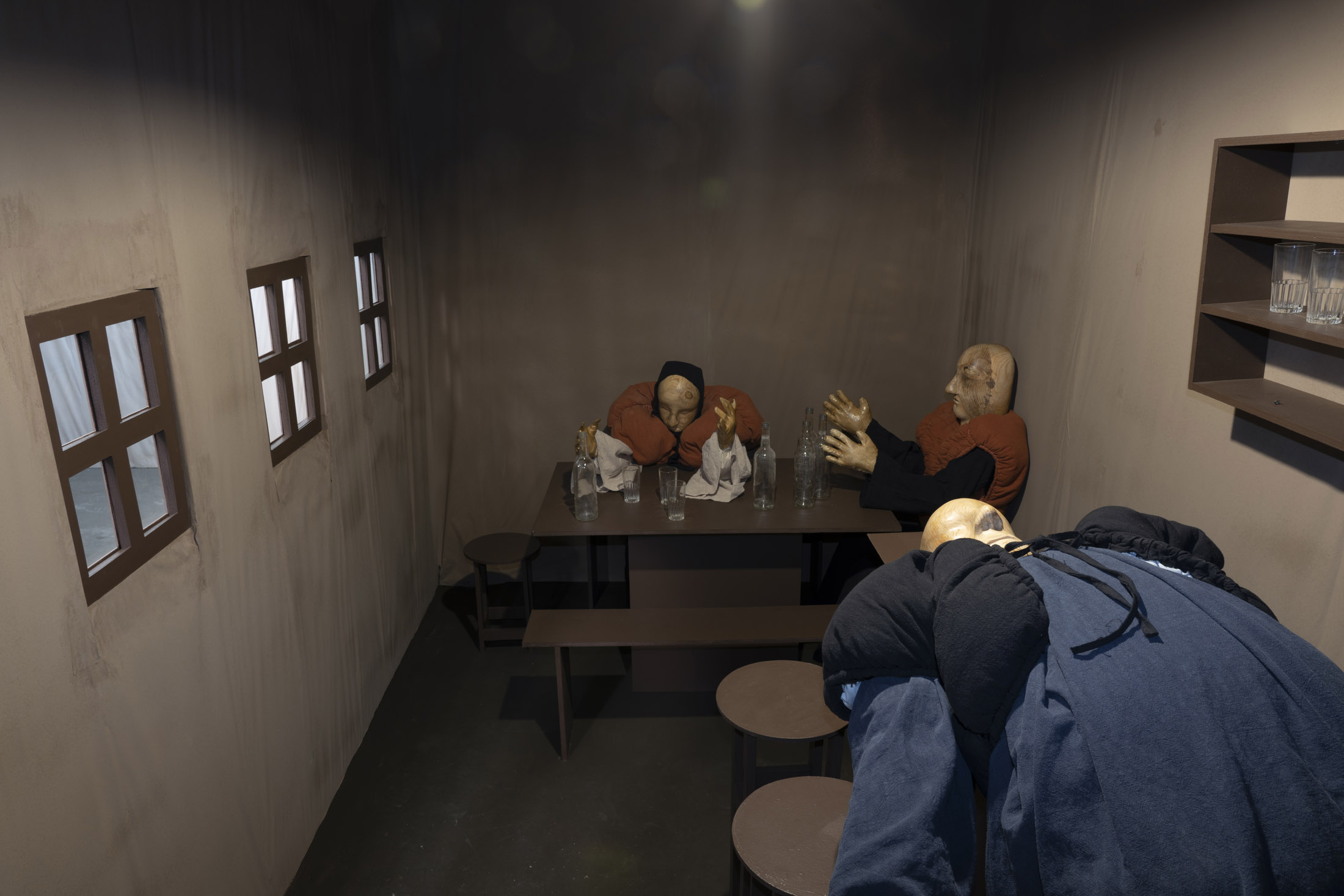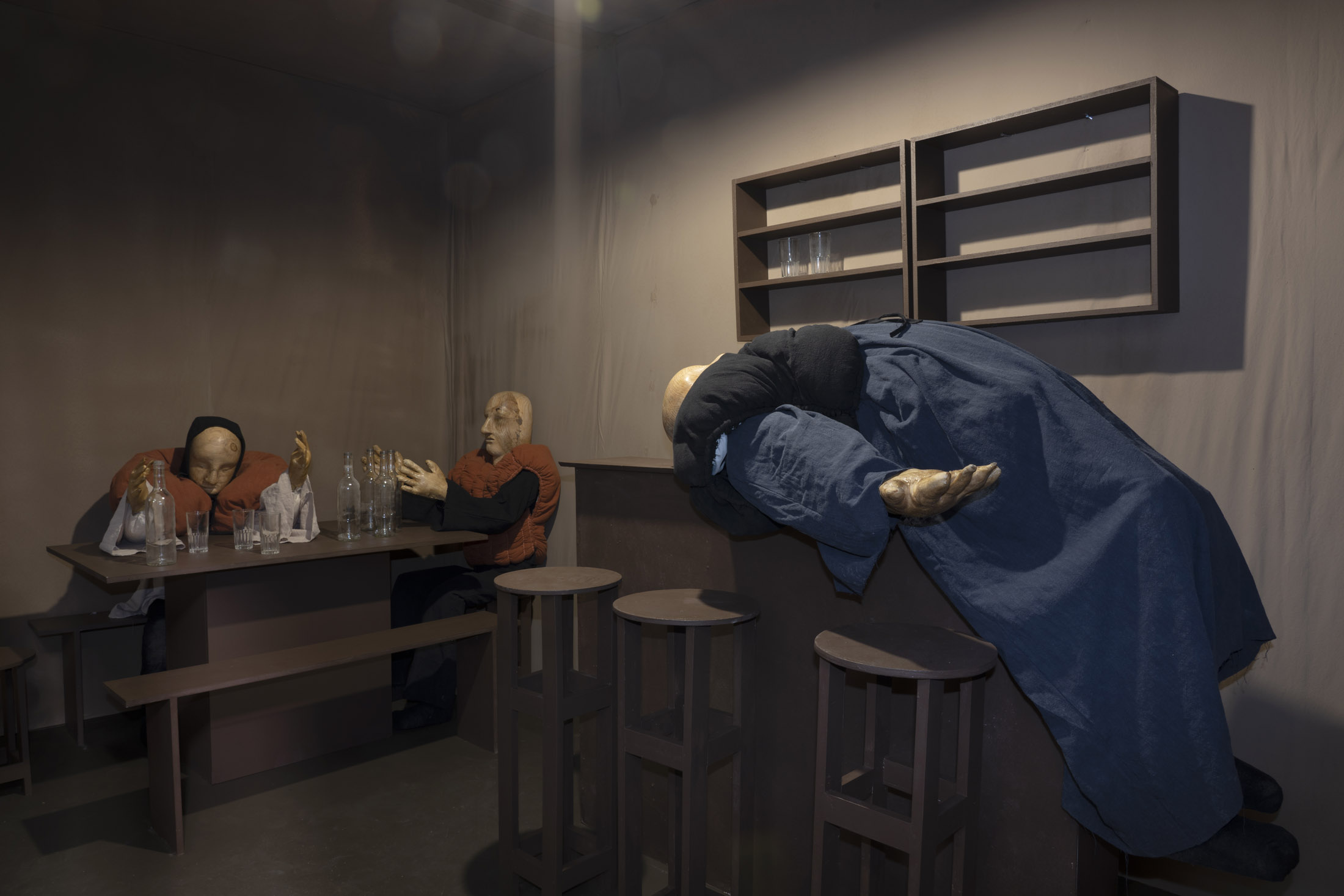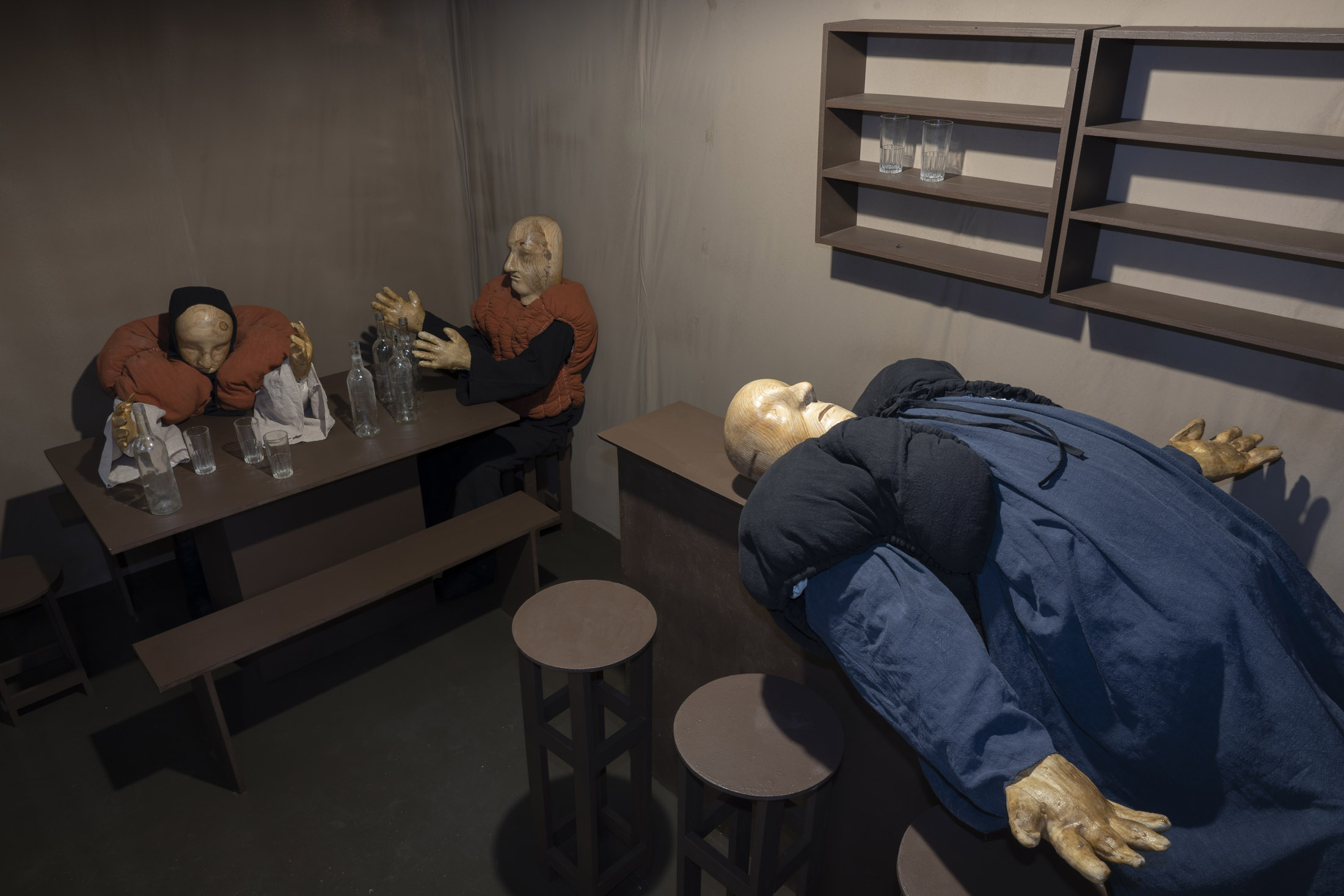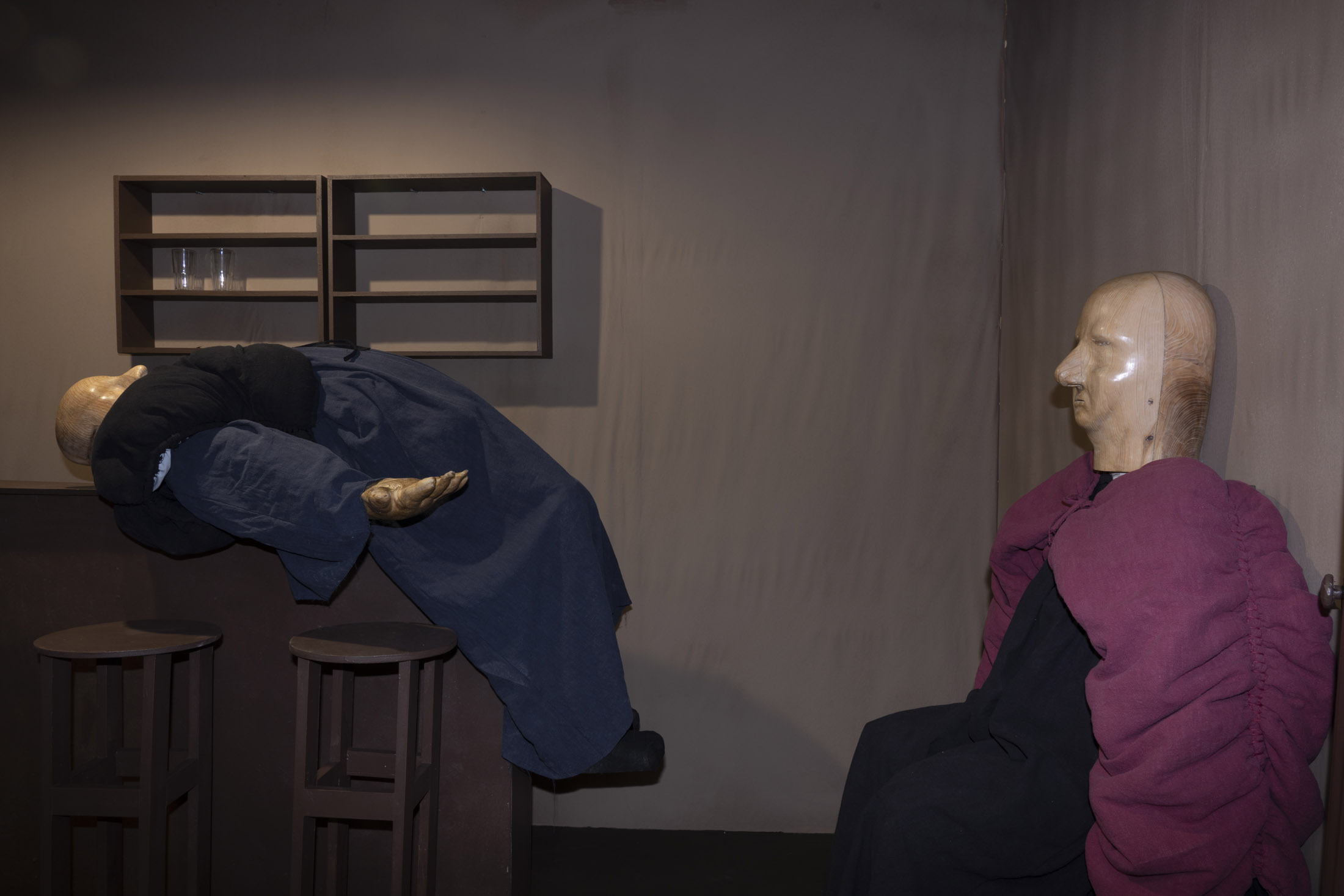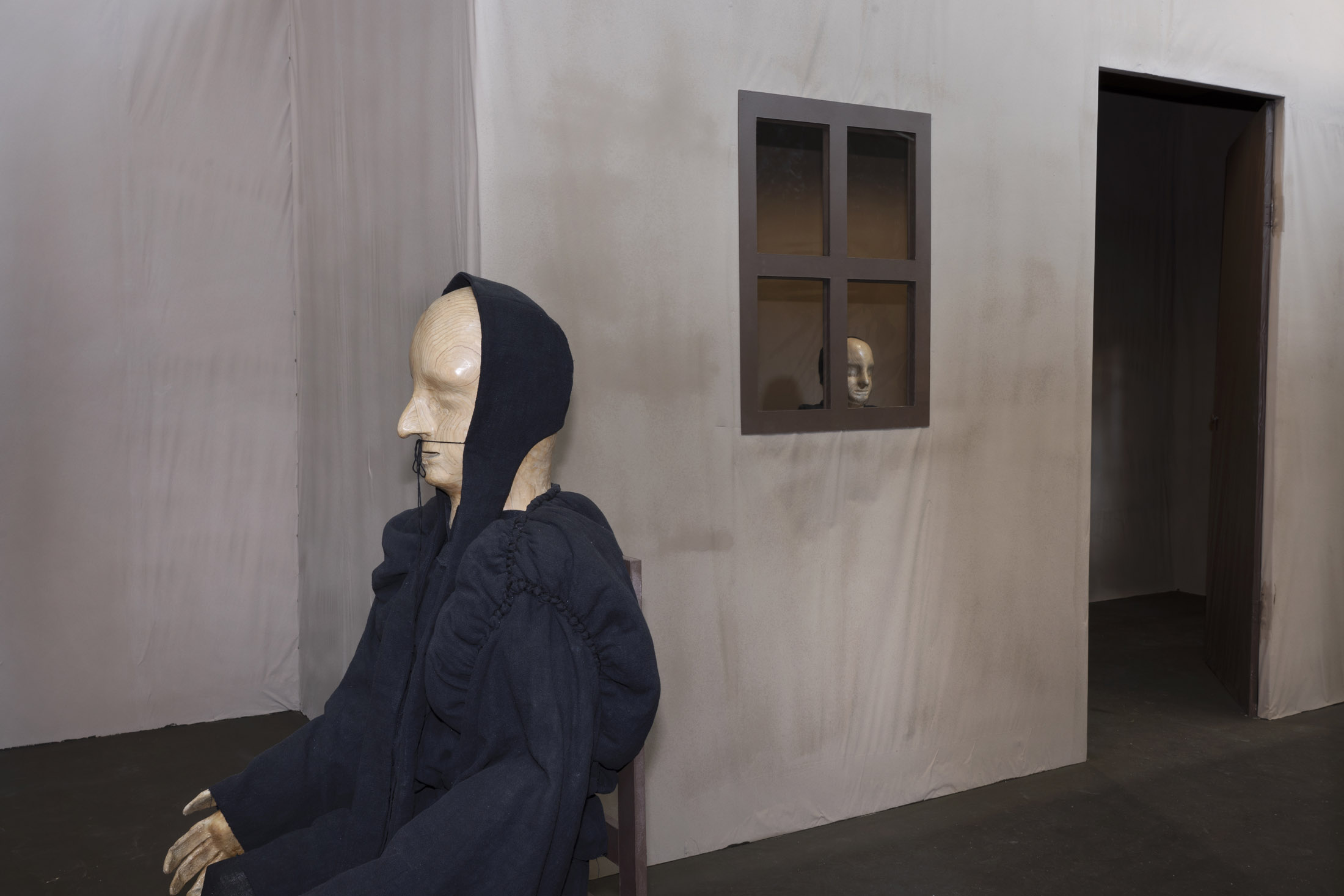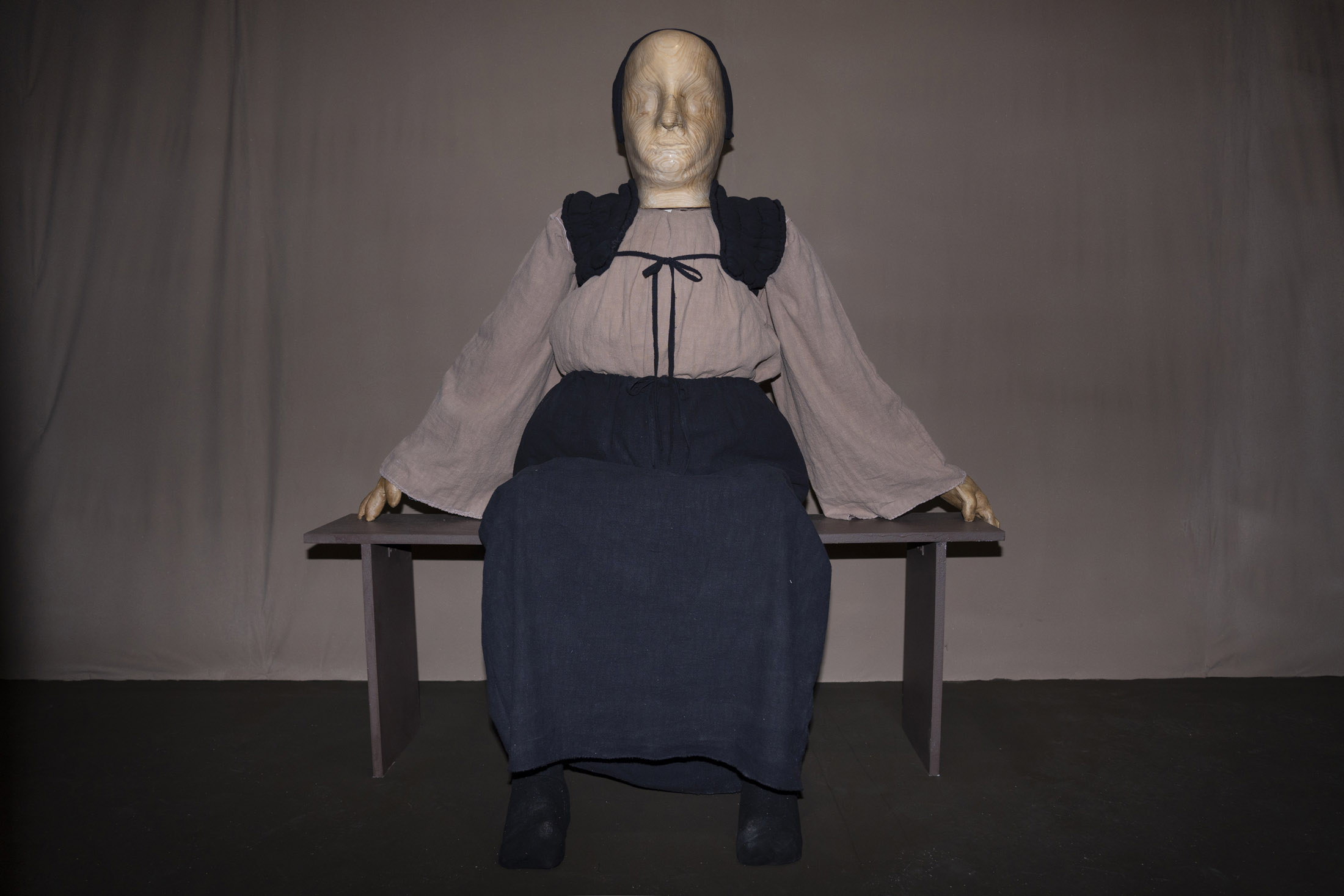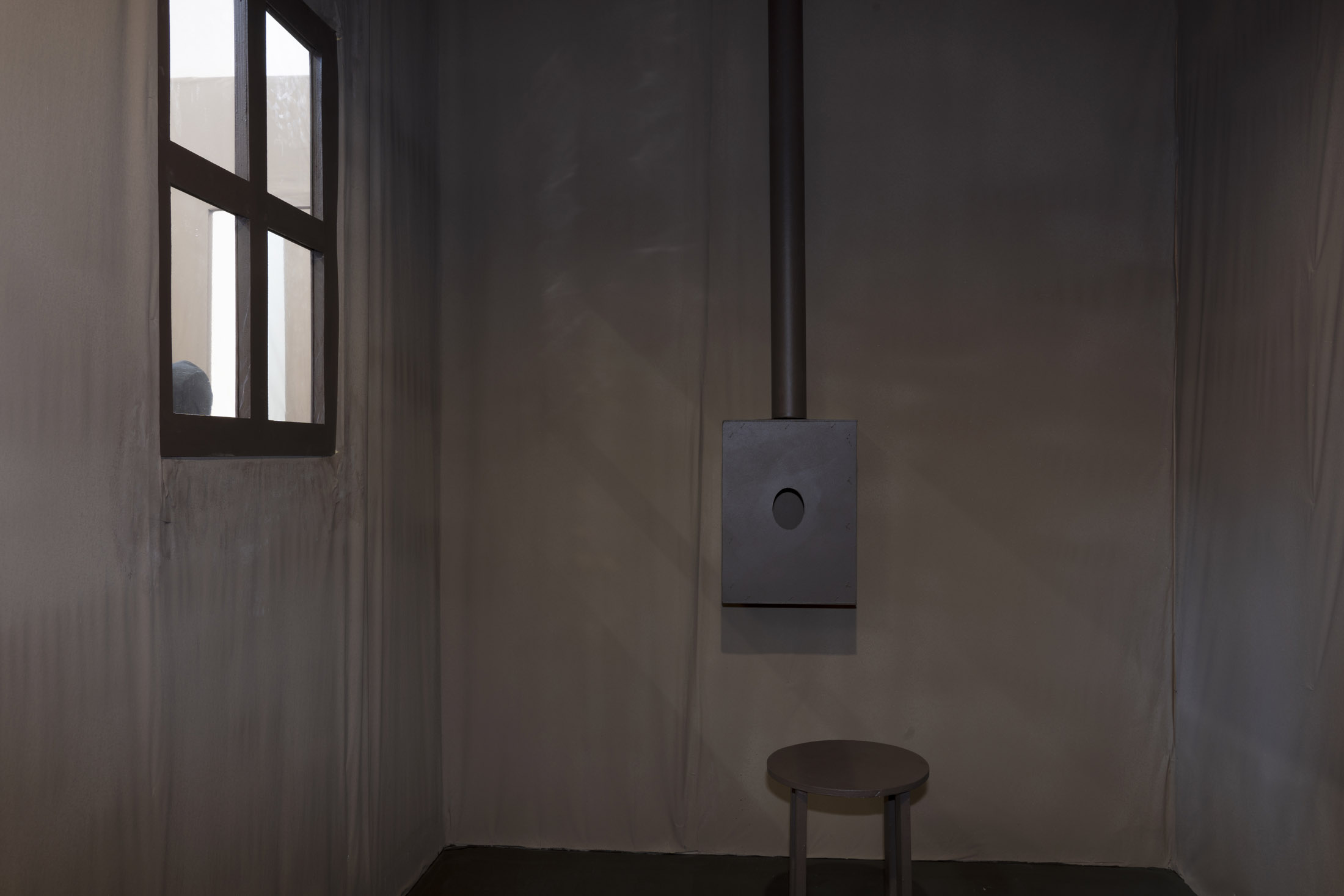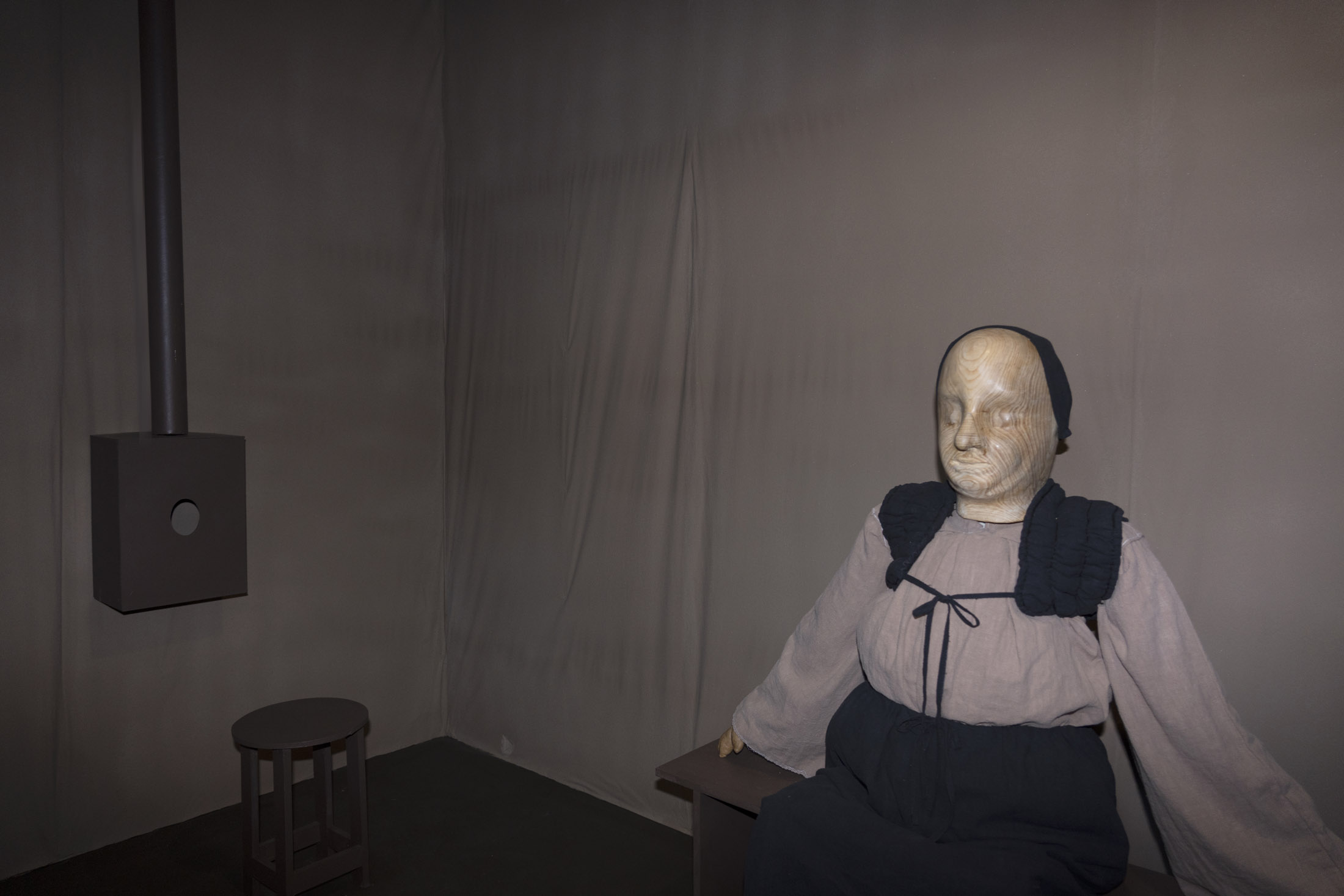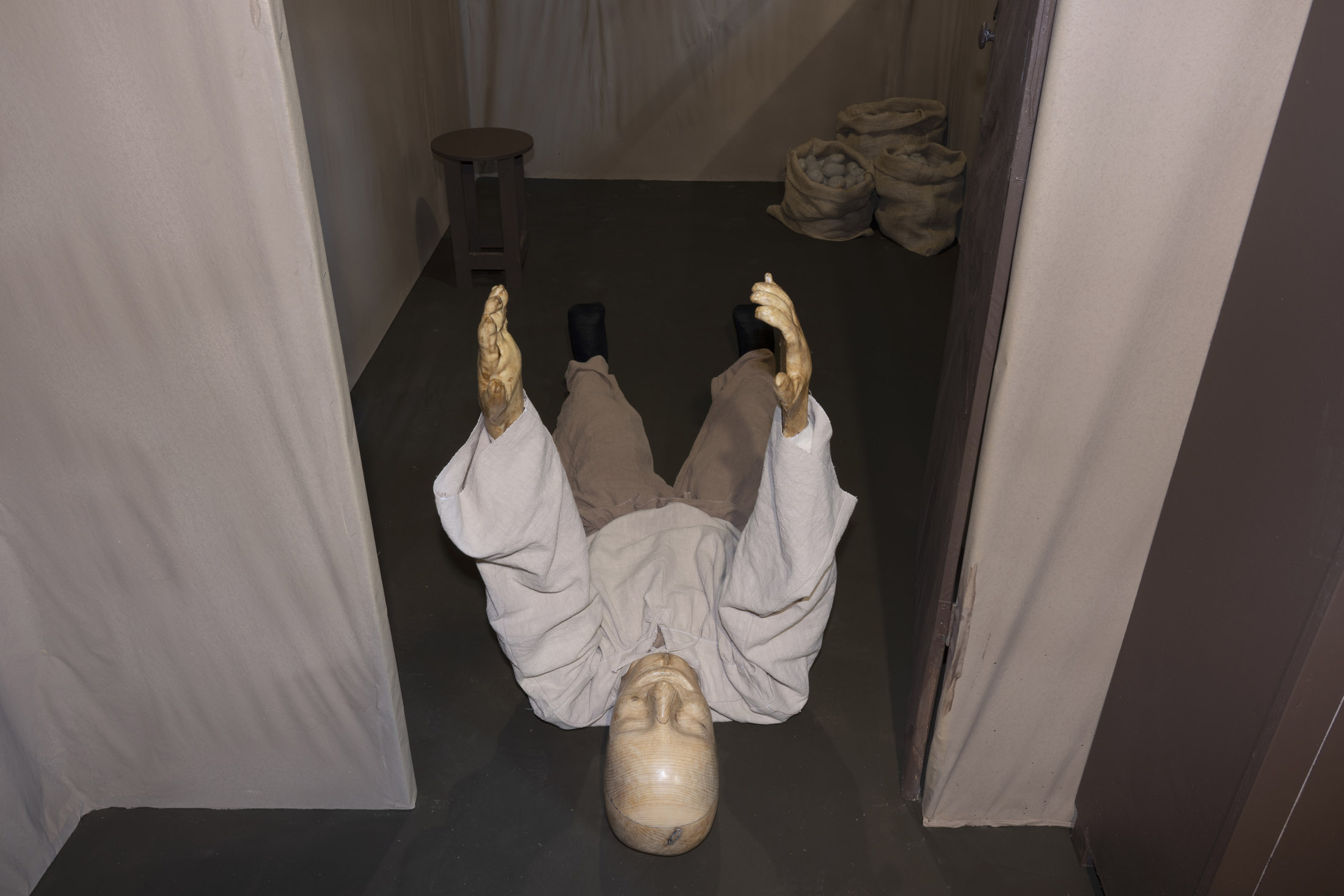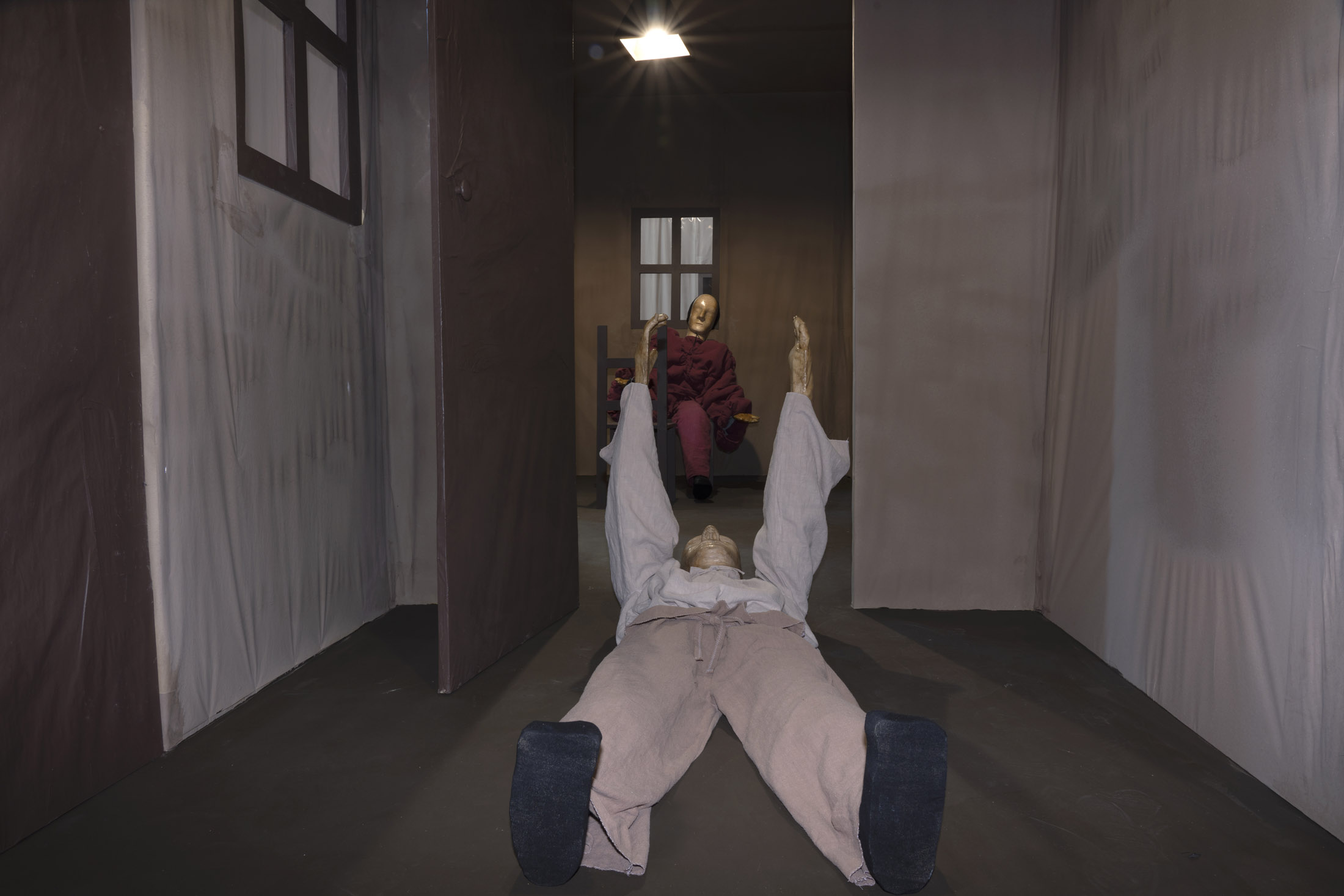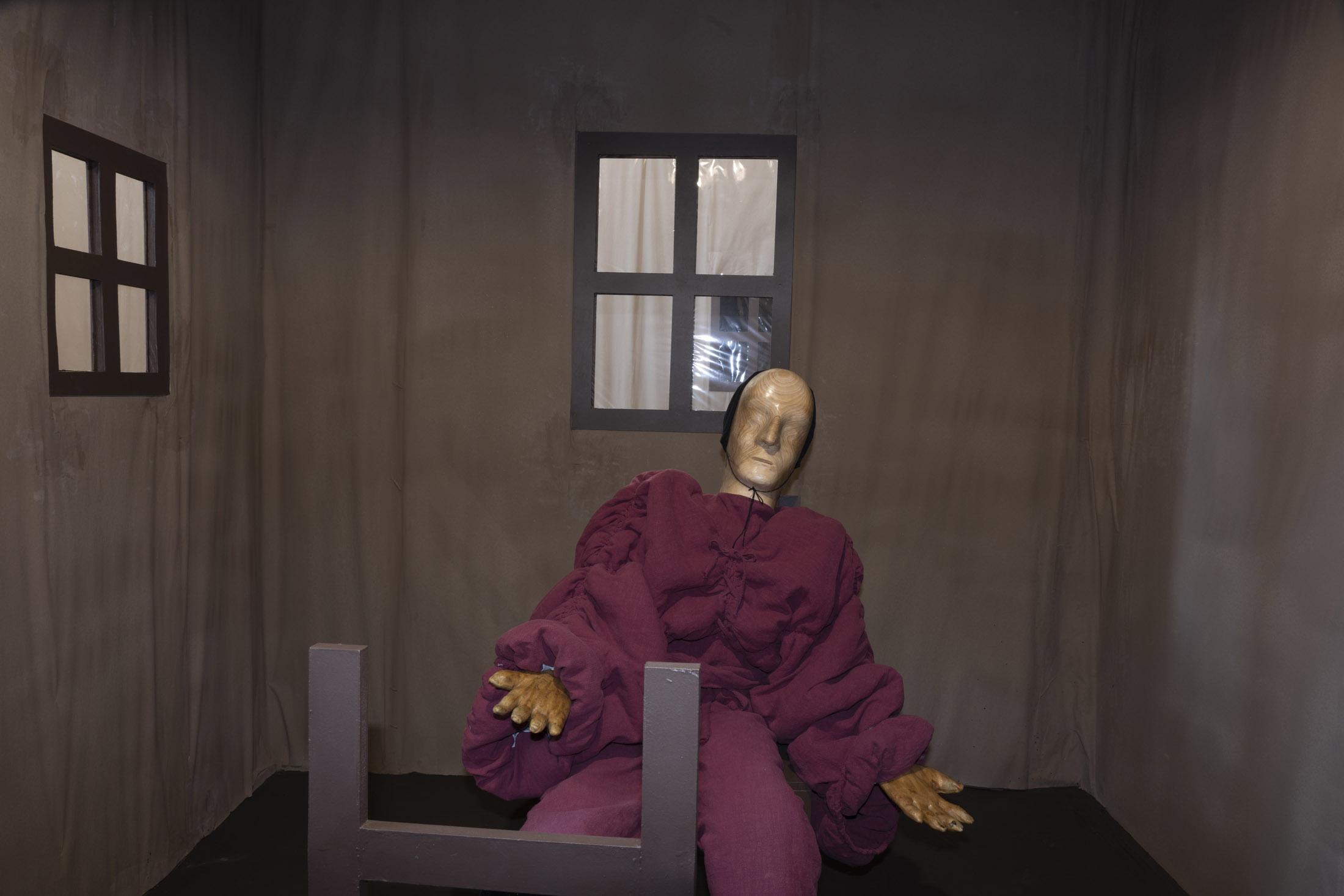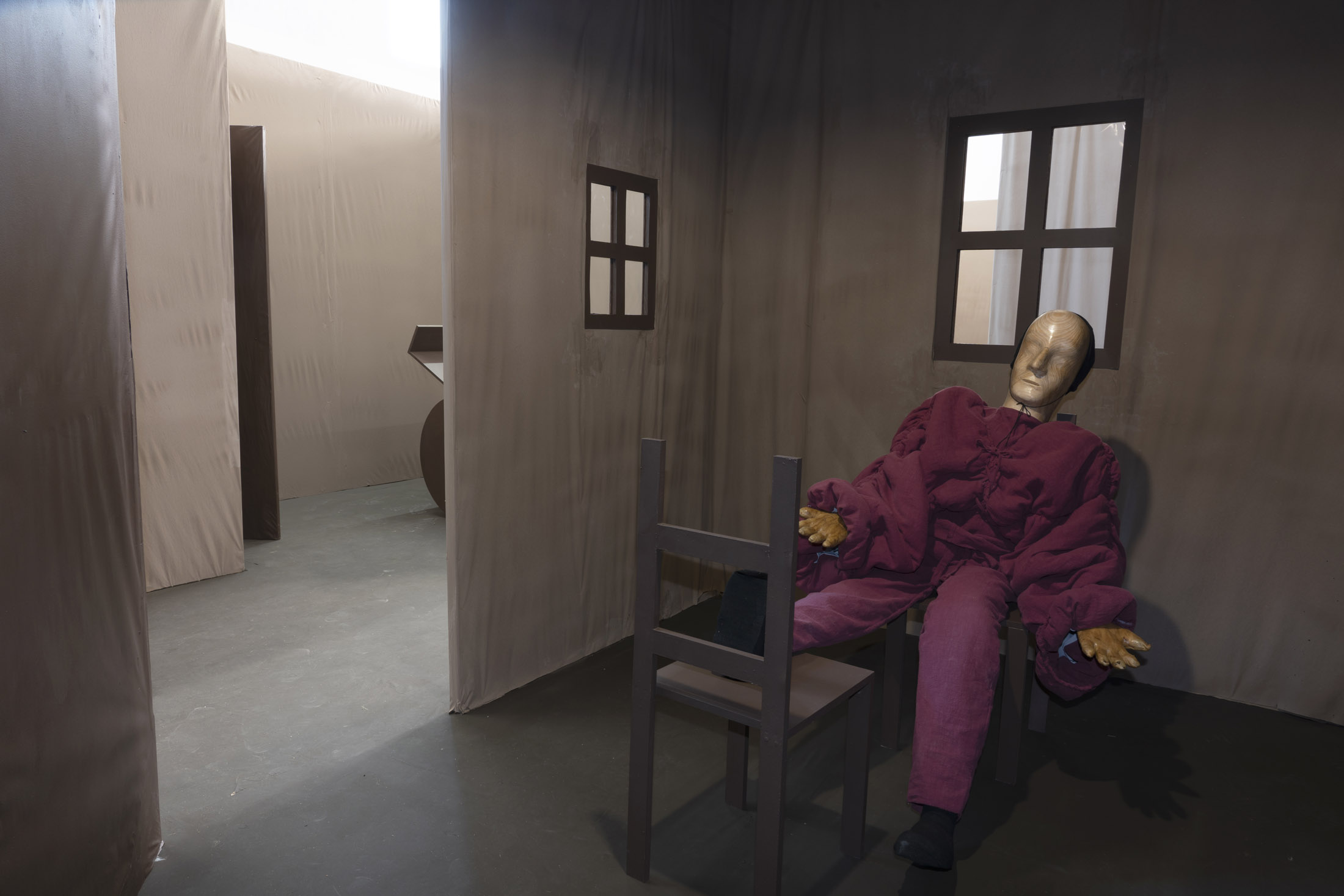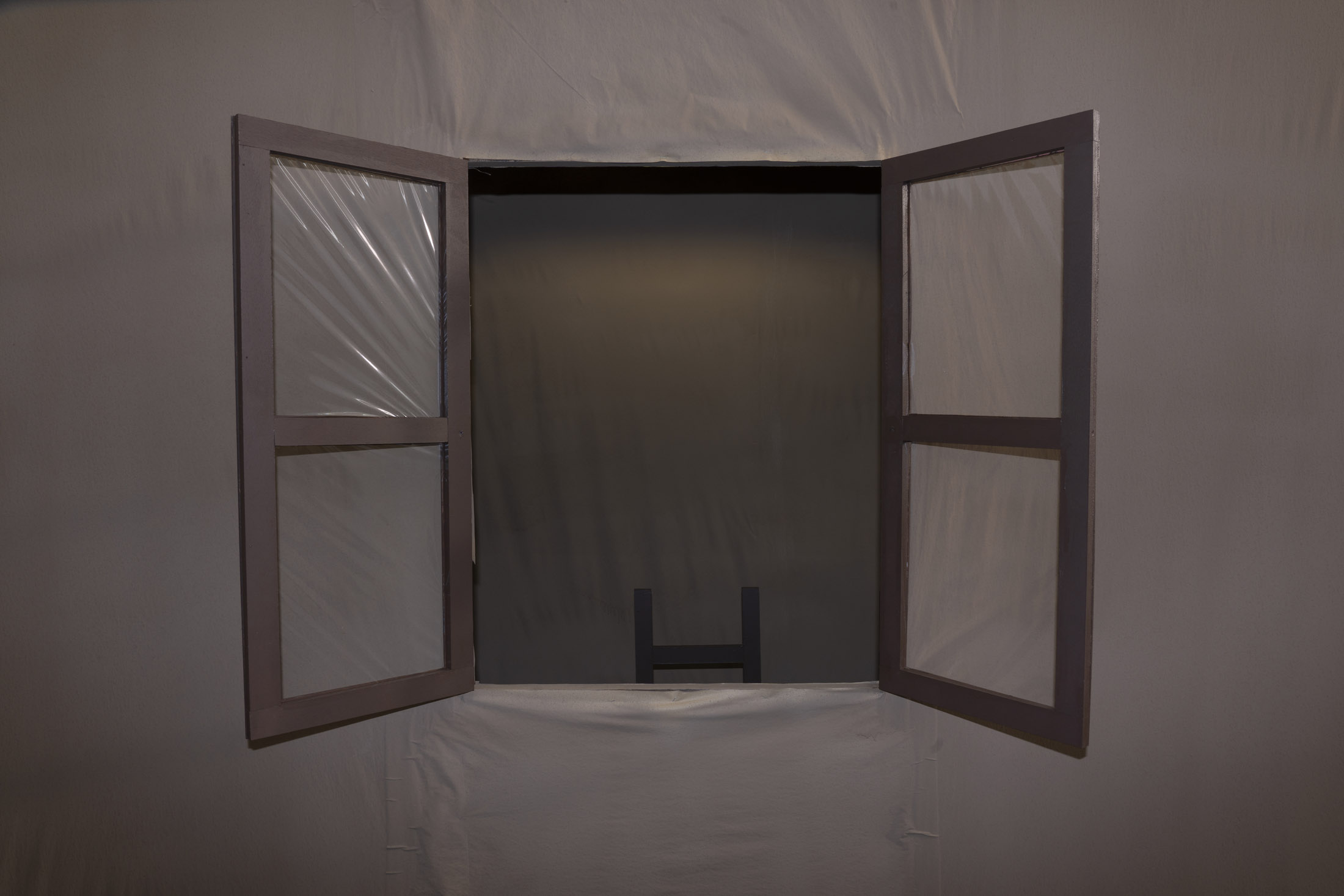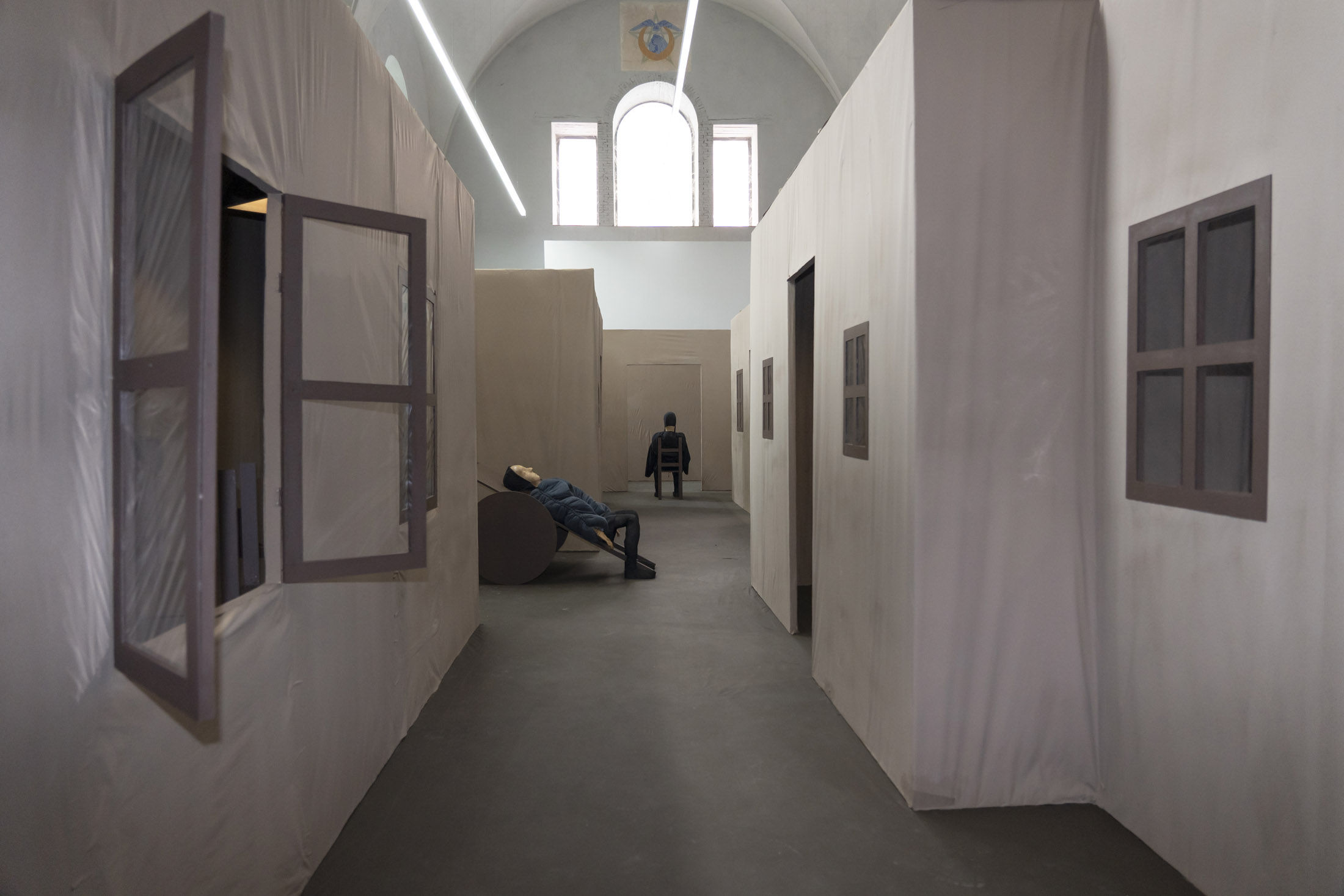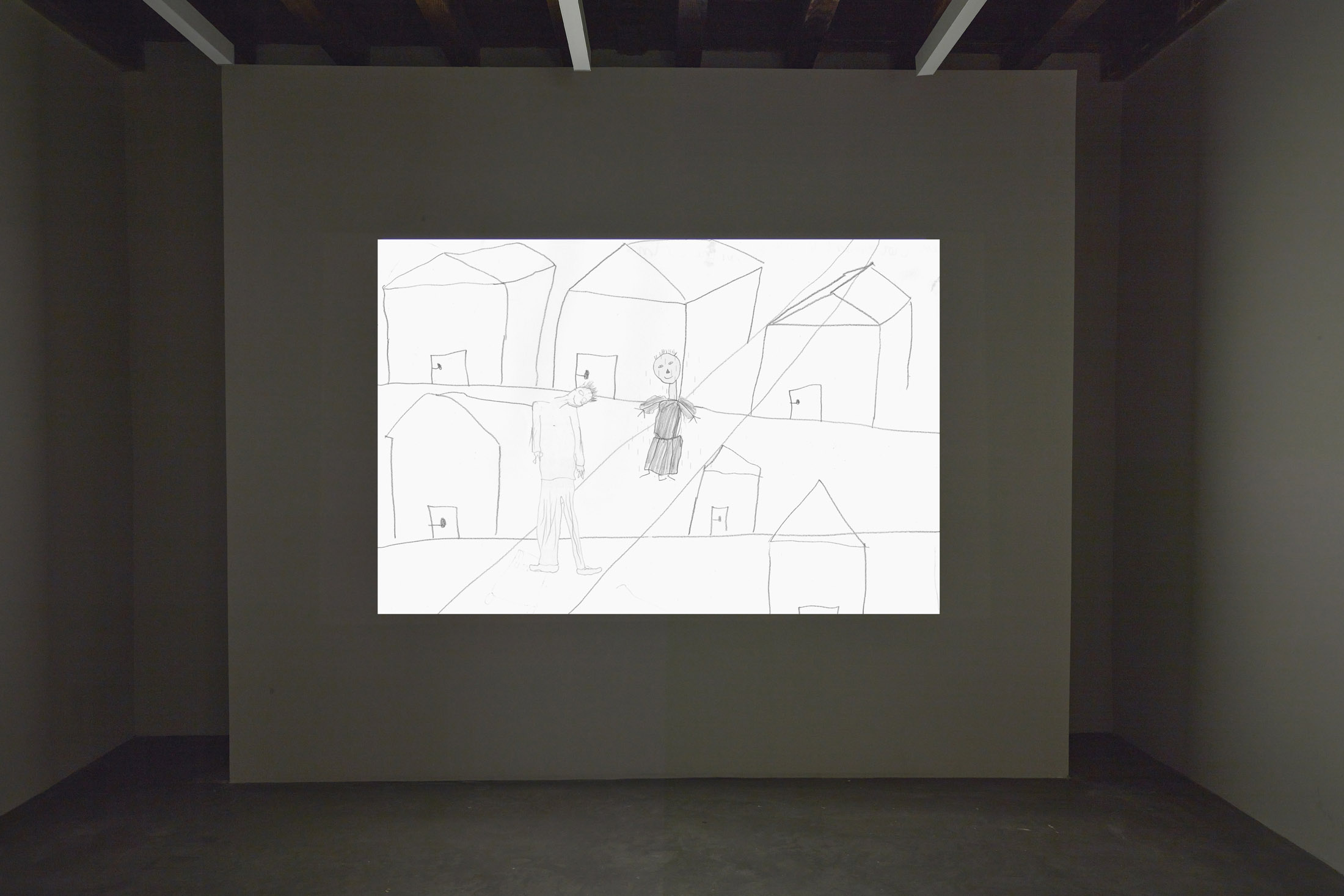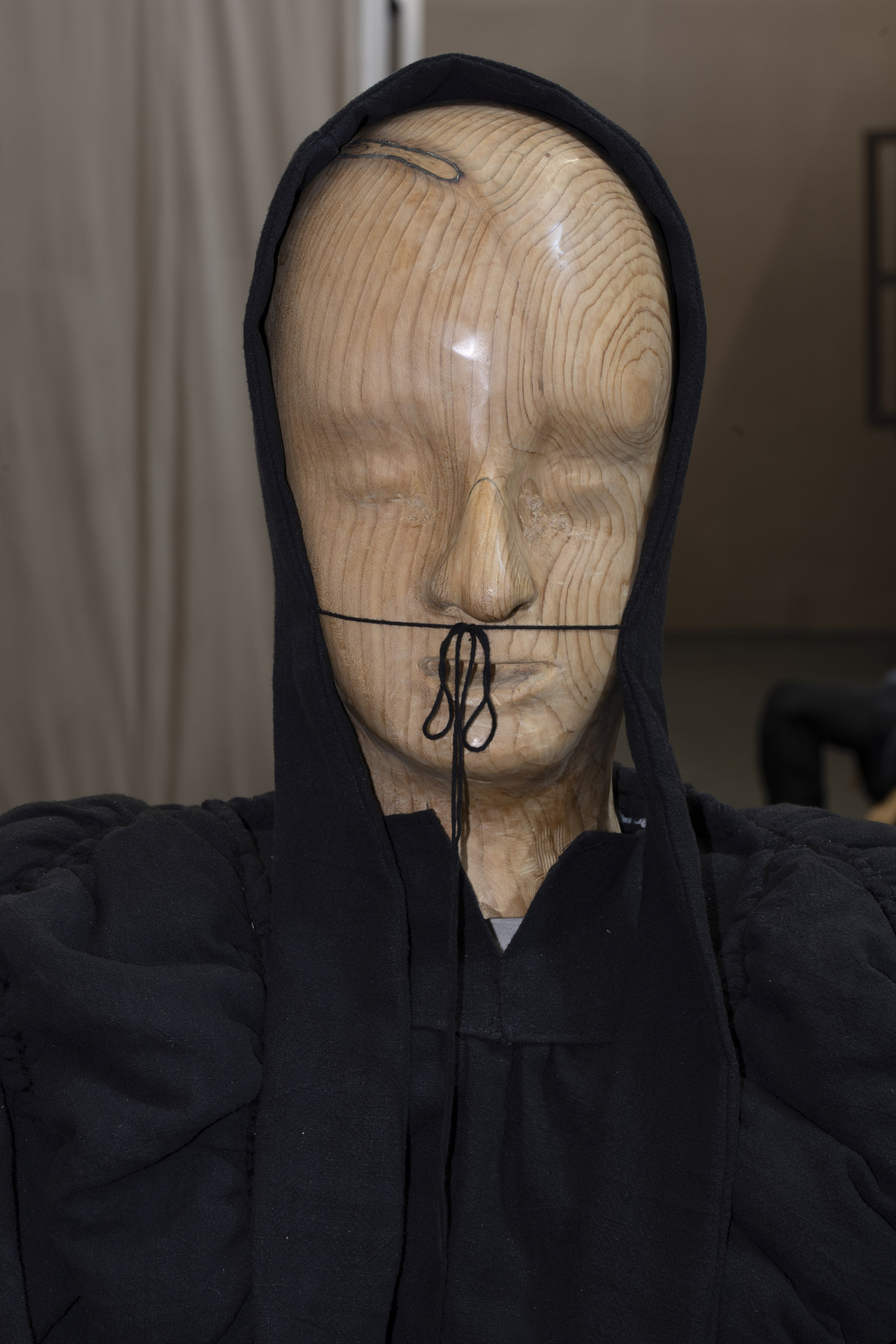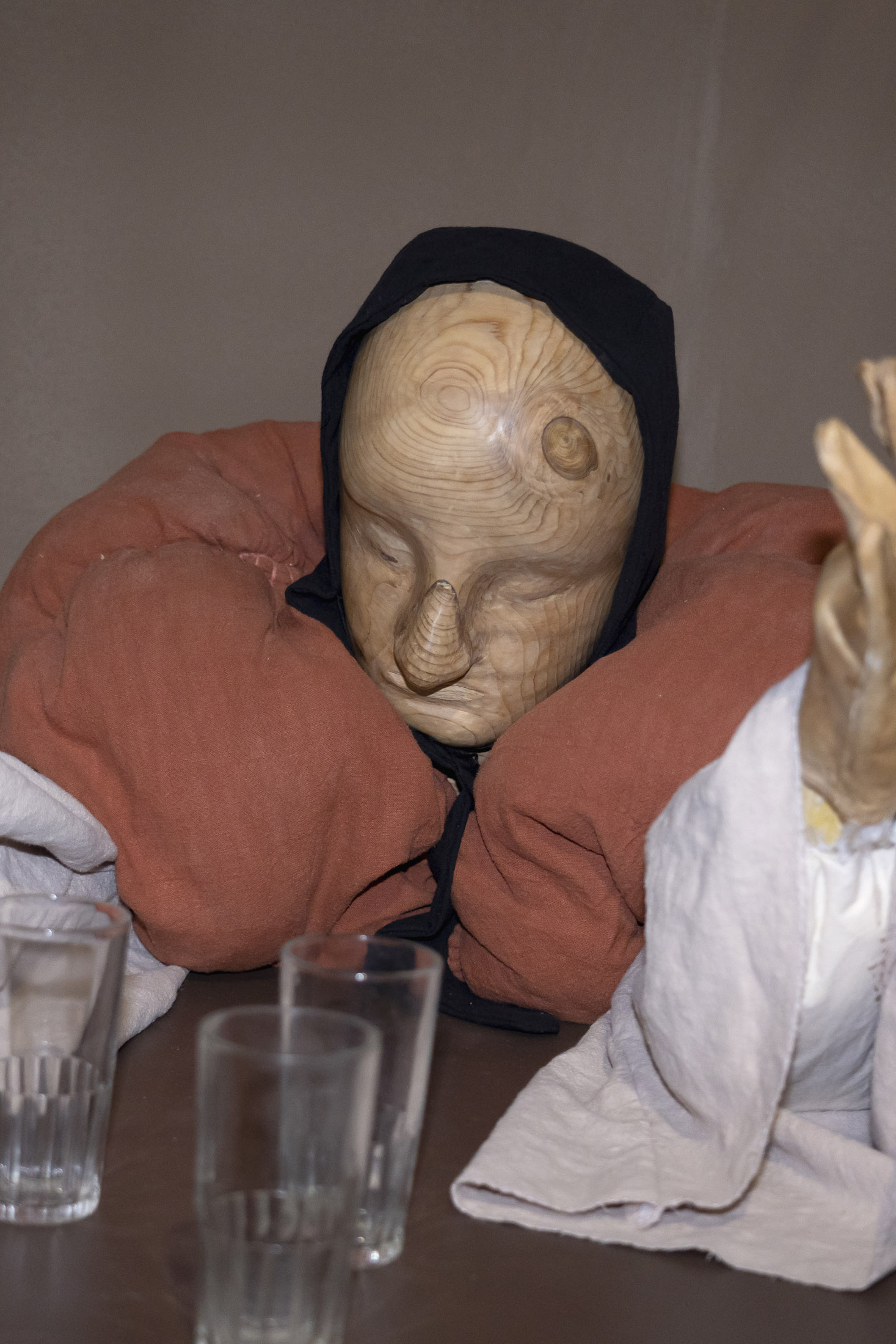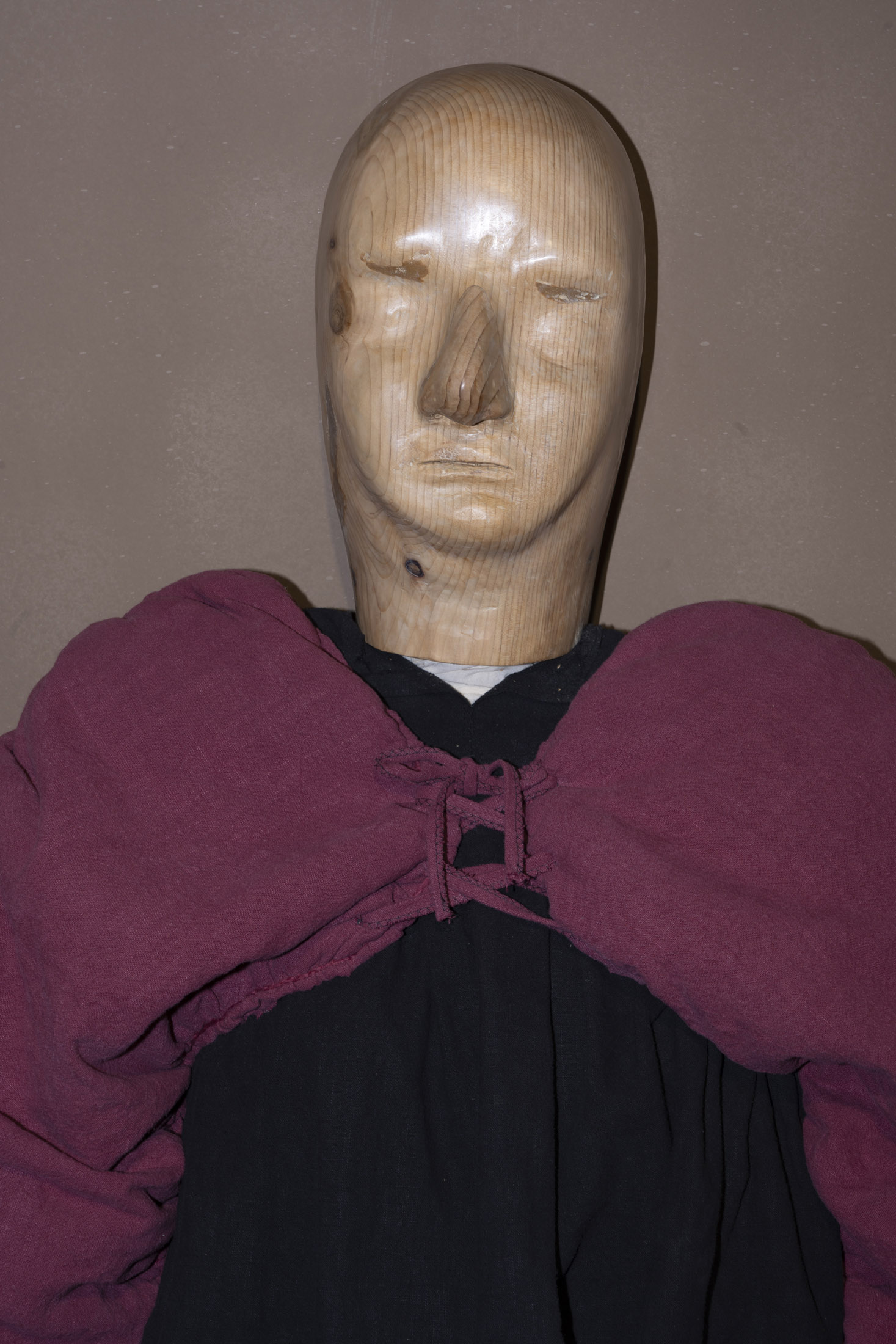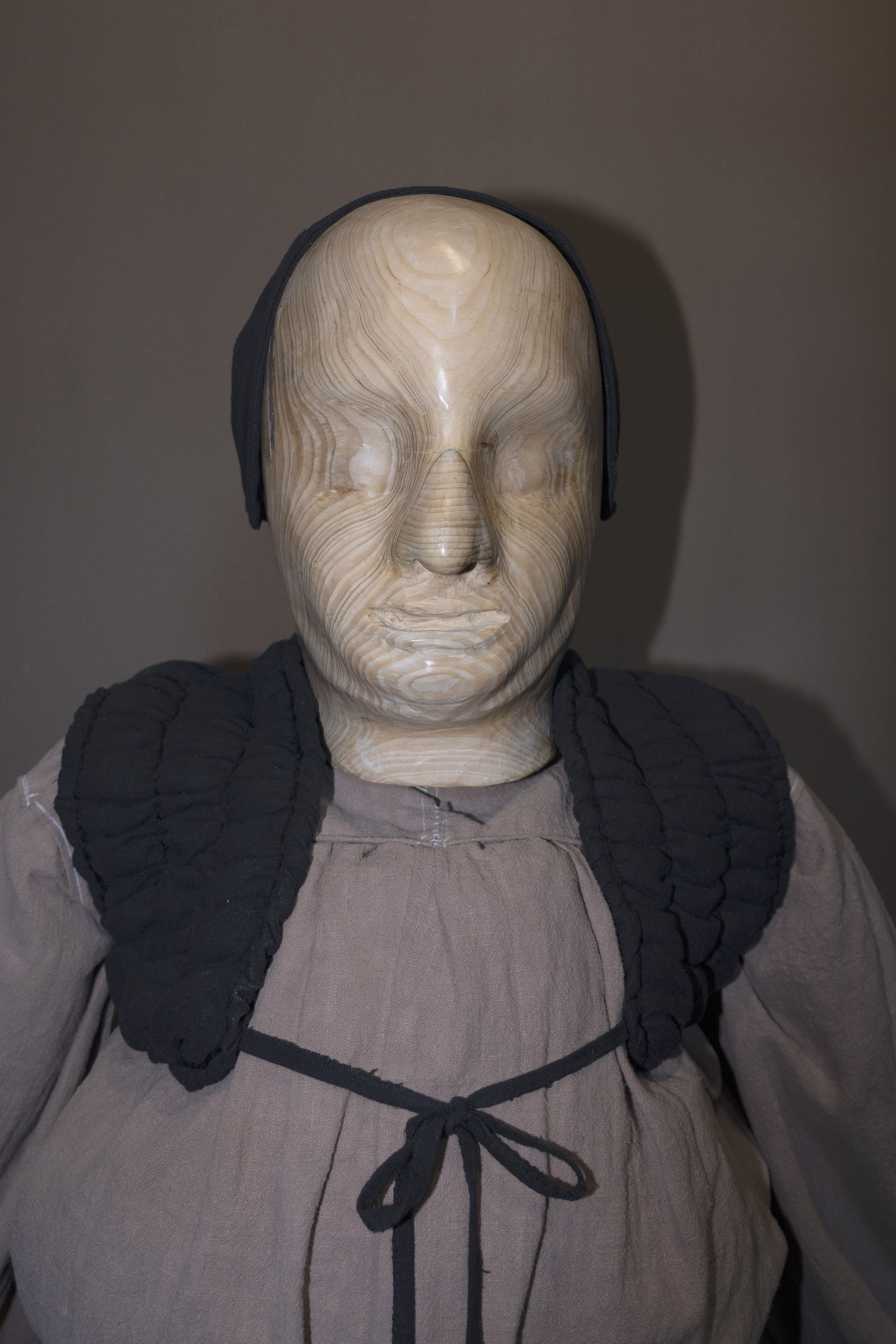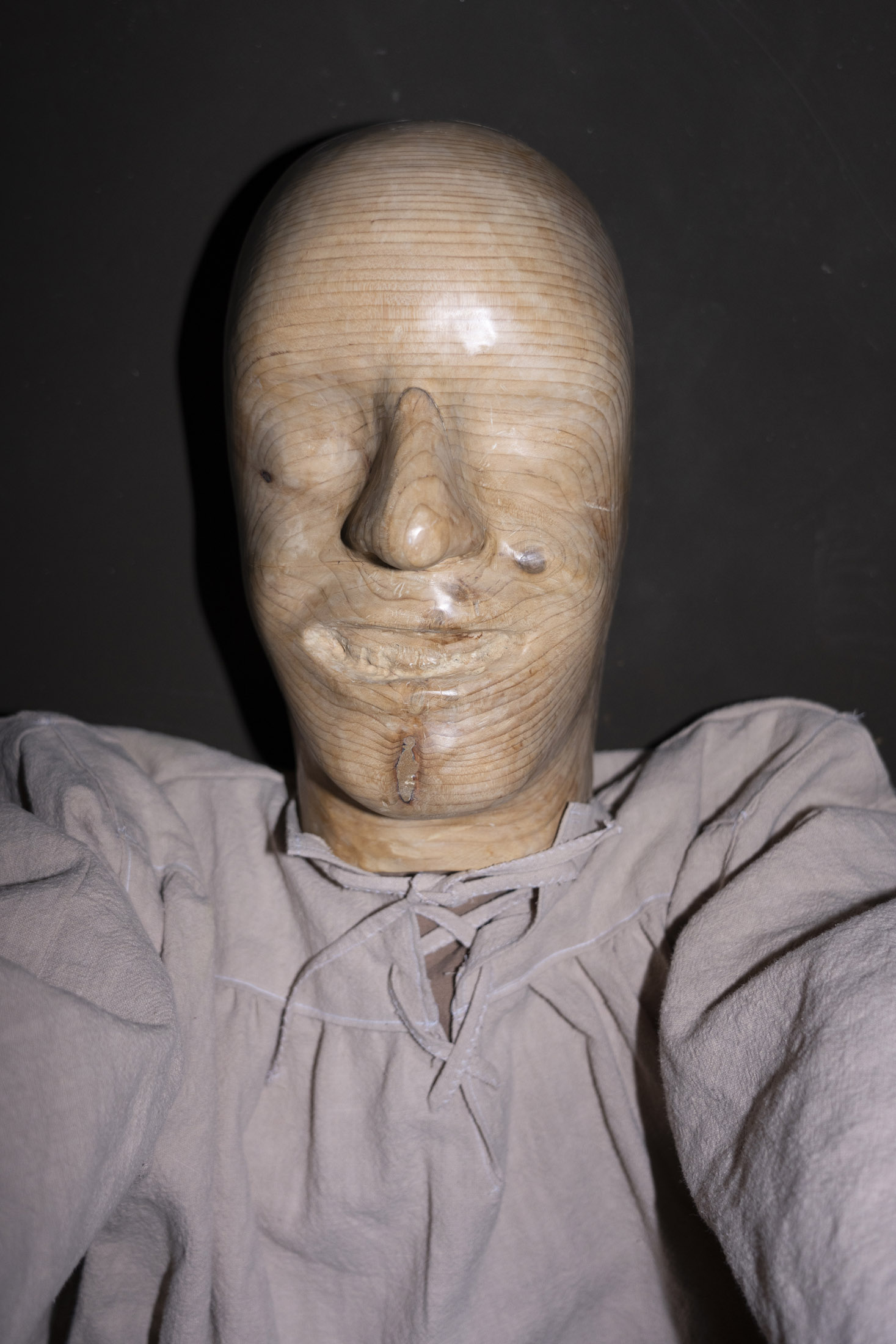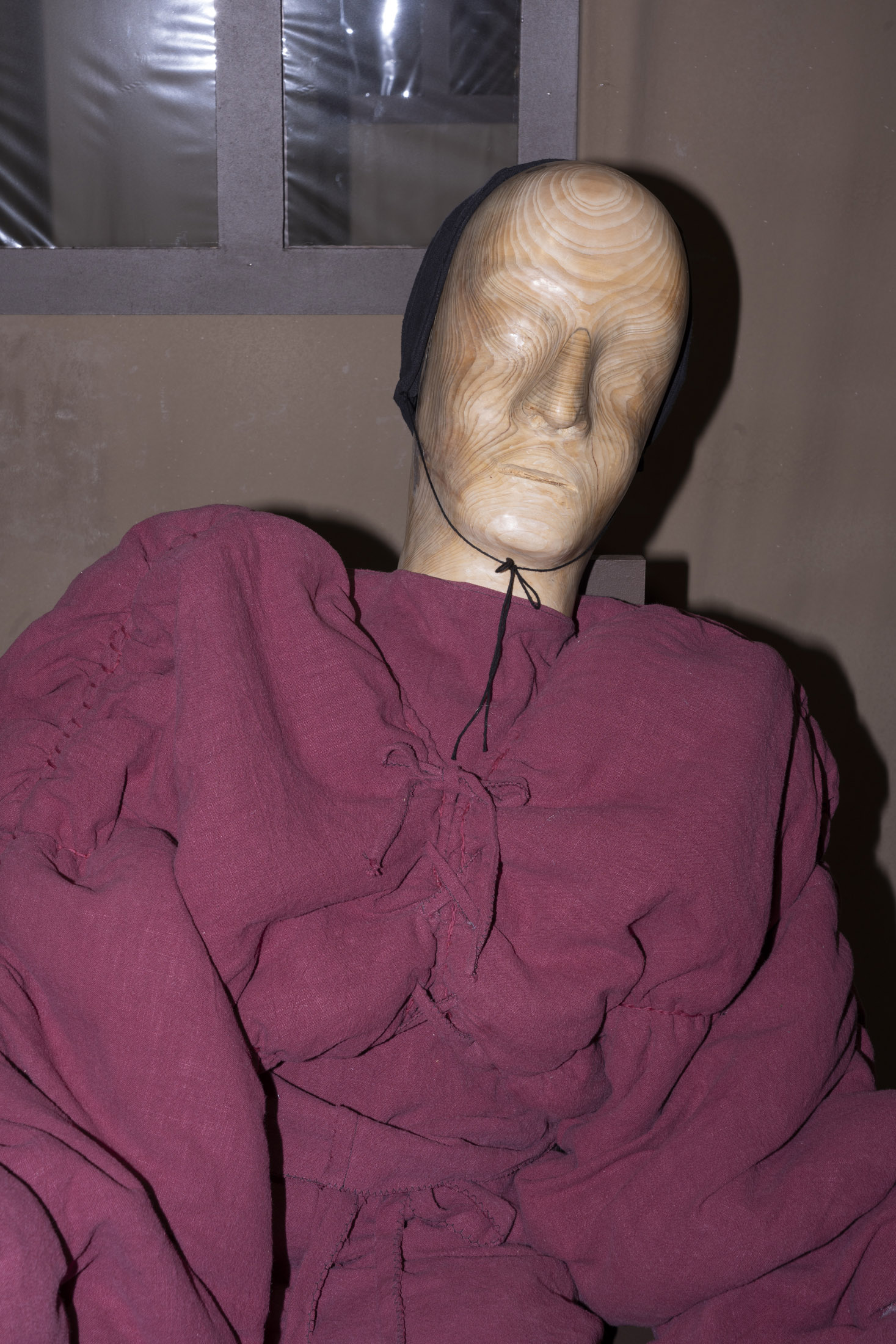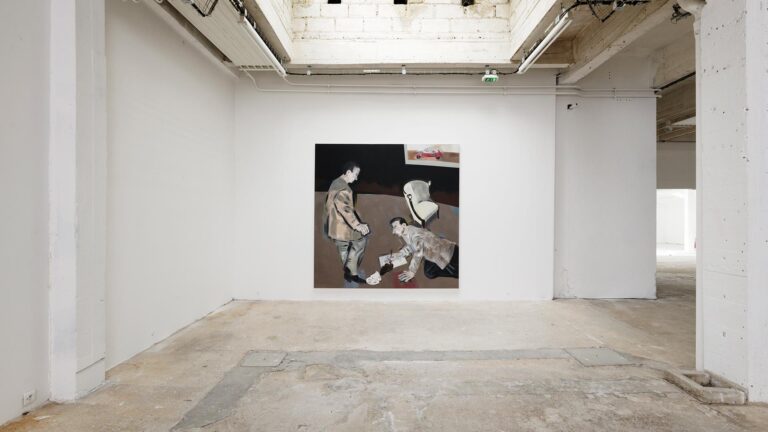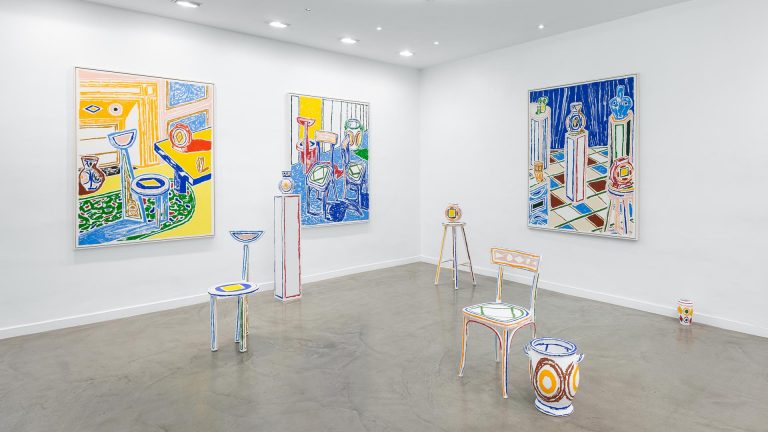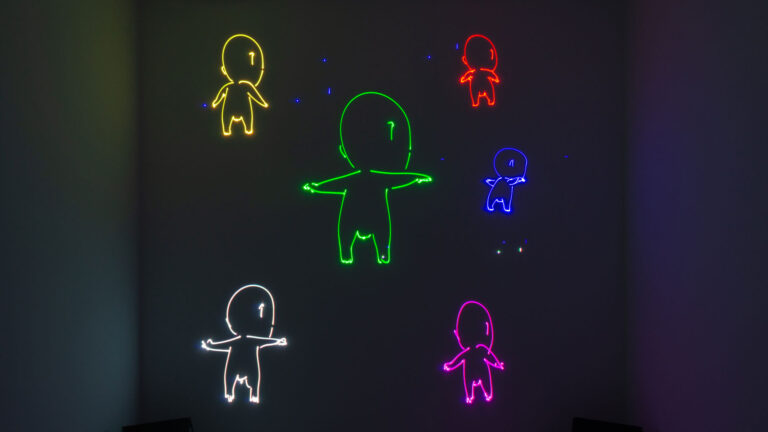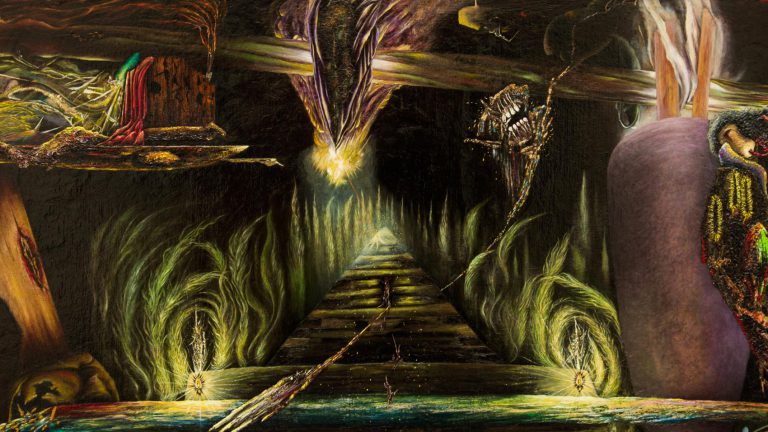Artists: Angélique Aubrit & Ludovic Beillard
Exhibition title: Le sort des Labourgue
Venue: Centre d’art contemporain Les Capucins, Embrun, France
Date: June 28 – August 27, 2023
Photography: all images copyright and courtesy of the artist and Centre d’art contemporain Les Capucins, Embrun
With the participation of the CP-CE1 classes from the Cézanne school and CE1, CP, CM1 from the Pasteur school – Embrun
Since 2015, the contemporary art centre has been hosting artists to work with primary school students in Embrun. This year, it was Angélique Aubrit and Ludovic Beillard who led these workshops, culminating in an exhibition that is both personal and collaborative.
Le sort des Labourgue sounds like the title of a soap opera, a saga in which the family forms a clan. The plots, secrets and jealousies intrude everywhere, in the houses, between the houses, in each others’ courtyards, and even further afield, in the streets and public squares, no barrier can contain them. Discreetly, from the windows, we watch the others, those we know well, sometimes very well, yet still not enough. There is a desire to tell, to see and to hear more. Everything can be recounted, weaving false truths from mouth to mouth.
These mothers, brothers, sisters, cousins and neighbours have been in each other’s lives long enough to know that the other is still a stranger. Their fate is sealed in this closed universe that they have constructed with their words and thoughts. Words that sometimes take a magical path – the very power of witchcraft, the practices of which ethnologist Jeanne Favret-Saada has studied in the Mayenne grove. In her book, Les mots, la mort, les sorts, the author states : “Witchcraft is about words, but words that are power rather than knowledge or information. It is a word that binds and breaks the spell, and anyone who puts themselves in a position to say it is fearsome.”¹ Only the members of the clan, of this world within a world, those who have been “caught,” who have already been confronted with the spell, can perceive and recognise the true power of these words.
Others cannot understand. It is essential to put oneself in the other’s place to hope to access a form of knowledge, however fragmentary and temporary. Through their performances and exhibitions, Angélique Aubrit and Ludovic Beillard explore the conditions and trajectories of these possible encounters with those who are not us. Since 2021, when they started collaborating, they have been inventing a geography of relationships, of where they are possible as much as where they might fail. A geography that inscribes distances, the distances of bodies that we impose on ourselves and others, that we refuse or are refused.
The duo of artists creates sets invariably inhabited by characters. In Embrun, there are nine of them. They include Gorbes, the dog trainer, Pascal Labourgue, the potato seller, and Tristane, his magician daughter. They all look the same, one metre sixty in height, with wooden heads and feet carved from cedar, and bodies made from linen in shades of off-white and anthracite grey, combined with a little orange, pink and blue. They share the same absent air as if everything were happening outside of them. The eyes and mouth, where the emotions lie, are represented by a discreet relief or a delicate hollow. For Angélique Aubrit and Ludovic Beillard, the place accorded to things is enough to embody them. Feelings are experienced, invented rather than represented.
A few props also indicate the role played by each character: a cart for Bleue the rag woman, a flute for Christine Labourgue the musician and glasses and bottles for Eric Chales the drinks vendor. Most of the time they are on stage, or at least in a situation where they are trying to entice others to join them, to reduce the distance between them. Angélique Aubrit and Ludovic Beillard are constantly working on and expanding this story, the back-and-forth between the characters, movements of attraction and repulsion. When the characters are activated, in performances or films, their heavy, cumbersome gestures seem to be executed as if in slow motion. Each move towards or away from them is experienced in a surreal duration as if suspended in a temporal loop.
The nine characters in the Sort des Labourgue are set against a backdrop of brown-painted craft paper (a darker brown than the paper itself), a model reproducing a neighbourhood of streets, dead ends and five single-story houses. It is reminiscent of the disproportionate maps of Borges, which cover the territories of the Empire they supposedly represent. By literally basing themselves on their subject, they no longer represent anything. The installation of Angélique Aubrit and Ludovic Beillard, on the other hand, still allows a glimpse of the overarching setting, despite its highly immersive dimension. It is sufficient to look up to see the vaulted ceilings of the art centre, the neon lights running through it and the windows protruding beyond the fragile paper partitions. A box within a box, yet the boundaries between reality and entertainment are not as clear-cut as they may first appear.
Within this grotesque reconstruction of a reality that has itself been largely filtered, there is an attempt to say that there is not just one way of being or doing things. It was in this spirit that the two artists worked for several weeks with students from four primary school classes in Embrun. Through drawing workshops, the children were invited to imagine different settings and attributes for the nine characters in the exhibition. The instructions were simple: use a pencil as the only tool, no colours and systematically share the drawings with their classmates. None of the drawings were individual. The aim was to erase the notion of authorship while simultaneously revealing the individuality of each person.
The result is an animation presented at the entrance to the exhibition, whose narrative is reduced to actions played in a loop as if the characters were automatons. Once again, the challenge lies not in the development of a narrative but in the potential contained in the few gestures and signs sketched out. This restraint ensures that no interpretation or narrative is set in stone because both the animation and the exhibition allow the public to play their part as additional protagonists in the Labourgue clan.
Solenn Morel, Translated by Jennetta Petch
¹ Jeanne Favret-Saada, Les mots, la mort, les sorts, published by Gallimard, 1977, p26.



